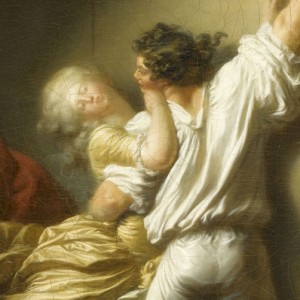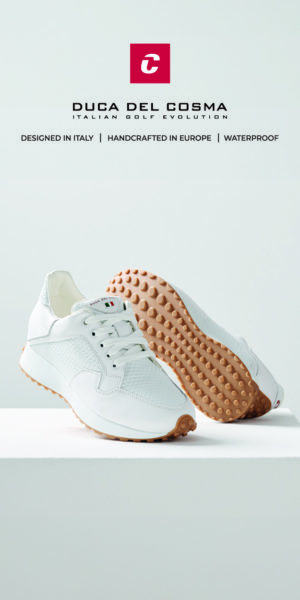Posted on August 26, 2015 in Arts & culture.
Exhibition: Fragonard in love at the Musée du Luxembourg
The eighteenth century was, according to the Goncourt brothers, that of seduction and romantic intrigue, of which Jean-Honoré Fragonard (1732-1806) was the main illustrator, even the main agent.

Jean-Honoré Fragonard, Le Verrou (detail), circa 1777-1778, oil on canvas; 74 x 94 cm, Paris, Louvre museum, Department of Paintings
© Photo Rmn-Grand Palais (Louvre museum) / Daniel Arnaudet
The love inspiration runs through the protean and generous work of the "divine Frago", from the country compositions of his beginnings to the allegory of love that occupied the end of his career. By turns gallant, libertine, daringly pranky or on the contrary concerned with a new love ethic, his art crosses with passion and elegance half a century of artistic creation, constantly renewing itself to better grasp the subtle variations of feeling and l love impulse.
Highlighting for the first time the work of Fragonard through this amorous prism, the exhibition at the Musée du Luxembourg opens onto the mitan of the 1760th century, a time when the spirit of the Enlightenment was deeply marked by sensualism from 'England. The question of the delicate articulation of sensuality and feeling is then at the heart of philosophical, literary and artistic concerns. Strongly imbued with these questions at the end of François Boucher's workshop, the young Fragonard already brings a new sensitivity to "sheepfolds" and fashionable mythological compositions, imbued with sensuality, but which goes beyond the strict libertine strategy. At the same time, the study of the Flemish masters takes him from a sophisticated eroticism to country scenes whose carnal dimension is fully assumed, as in The Kiss won by the Metropolitan Museum. A brilliant illustrator of La Fontaine's very "free" tales, like his colleague the libertine miniaturist Pierre-Antoine Baudoin, Fragonard demonstrated an audacity that often meets that of many progressive writers and intellectuals of his time, such as the Diderot. indiscreet Jewelry; witness, with a certain vigor although allusive, the "secret" works for licentious amateurs of the turn of the XNUMXs who participated in edifying the image of a libertine Fragonard, painter of boudoirs and other scenes of alcoves. This rascal inspiration finds a wide variety of expression, from the polite Feinte resistance of the Nationalmuseum in Stockholm to the sensual but delicate Kiss (private collection).
At the same time as this freedom of spirit - even this license - Fragonard is working to renew, with great poetry, the theme of the gallant feast inherited from Watteau, as evidenced by the timeless Island of love lent by the Calouste Gulbenkian Foundation . Later in the course of the 1770s and 1780s, in the continuity of the famous Latch of the Louvre museum and while Les Liaisons Dangereuses de Laclos sound the death knell of libertine inspiration in literature, his art experienced a decisive turning point in exploring sentiment true lovers, through allegories carried away by a most delicate lyricism. With infinite subtlety, Fragonard then touches on the mystical dimension of profane love, on the sources of what will be "romantic love".
The tireless deepening of the love theme by Fragonard is presented at the Musée du Luxembourg through an exceptional selection of more than 80 famous or more confidential works, on loan from the most prestigious collections in Europe and the United States. The course gives pride of place to the painted work, but also to the prodigious drawing talent of Fragonard, as well as to his ambitious but frustrated career as an illustrator, with the drawings he produced for Les Contes de La Fontaine (loan the Petit Palais museum) and the furious Roland of Ariosto. Throughout this journey, the works of Fragonard are compared with those of some of his contemporaries with whom he established a fruitful dialogue around the representation of the feeling of love: François Boucher of course, but also Pierre-Antoine Baudouin, Jean -Baptiste Greuze or the illustrators Charles Eisen and Jean-Michel Moreau the young as well as the writers Diderot, Rousseau, Crébillon or Claude-Joseph Dorat.
- Commissioner: Guillaume Faroult, chief curator in the Department of Paintings, Louvre museum, in charge of XNUMXth century French paintings and British and American paintings.
- scenography : Jean-Julien Simonot
Useful information :
Operation: every day from 10 a.m. to 19 p.m., evening hours on Mondays and Fridays until 21:30 p.m., from 10 a.m. to 18 p.m. on Thursdays December 24 and 31 and Friday January 1.
exceptional closure on Friday 25 December.
Prices : € 12, TR € 7,5 (16-25 years old, job seekers and large families), special Youth: € 7,5 for two entries (Monday to Friday from 17 p.m.), free for children under 16 years old, beneficiaries of social minima.
access: M ° St Sulpice or Mabillon
Luxembourg Rer B
Bus: 58; 84; 89; Museum stop
Luxembourg / Senate
information and reservations: www.museeduluxembourg.fr et www.grandpalais.fr
Drawing Now Art Fair: Tatiana Wolska winner 2024
The invention of language by Gertrude Stein and Pablo Picasso
The history of French women's golf at Golf du Sorbier








